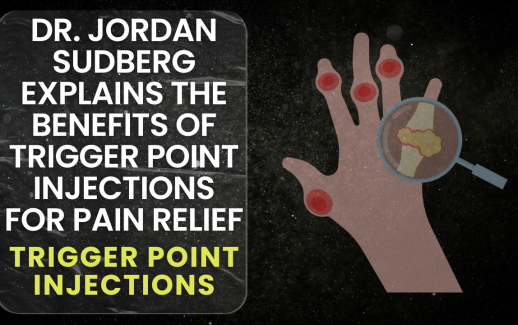Beyond the Backbone: Dr. Jordan Sudberg Shares Surprising Facts About the Spinal Cord
The spinal cord is often thought of as just a simple bundle of nerves running down the back—but it’s so much more. This essential structure serves as the communication superhighway between the brain and the rest of the body, and it plays a critical role in movement, sensation, and even reflexes.
According to Dr. Jordan Sudberg, a respected pain management specialist and advocate for spinal health, understanding the spinal cord can help us appreciate just how vital it is—not only in terms of mobility but in maintaining our overall well-being. “People often overlook the complexity and importance of the spinal cord until something goes wrong,” he says. “But the more we understand it, the better we can care for it.”
Here are some surprising facts about the spinal cord that Dr. Sudberg believes everyone should know.
1. It’s Only About 18 Inches Long
Despite its powerful role, the spinal cord is relatively short—about 18 inches long in the average adult male and slightly shorter in females. It extends from the base of the brain (the brainstem) down to the lower back, ending around the L1 or L2 vertebra.
“People often think the spinal cord runs all the way to the tailbone,” says Dr. Sudberg. “But in reality, it stops much higher, and the nerves continue downward in what’s called the cauda equina.”
2. It’s Protected by Three Layers of Membranes
The spinal cord is incredibly delicate, which is why it’s surrounded not only by the bony vertebrae but also by three layers of protective tissue called the meninges—the same layers that protect the brain. These layers include the dura mater, arachnoid mater, and pia mater.
“These membranes help cushion and protect the cord from trauma and infection,” Dr. Sudberg explains. “In conditions like meningitis or spinal infections, these layers become inflamed, which can be dangerous.”
3. It Has Its Own Reflex System
The spinal cord doesn’t always need input from the brain to react. Reflex actions, like quickly pulling your hand away from a hot surface, are processed directly through the spinal cord.
“This is one of the spinal cord’s most fascinating features,” notes Dr. Sudberg. “It allows for rapid responses without having to wait for the brain to issue instructions.”
4. It’s the Lifeline for Sensory and Motor Function
Every signal your brain sends to move your limbs or feel sensations travels through the spinal cord. Damage to this pathway can result in partial or total loss of function below the point of injury.
“This is why spinal cord injuries are so serious,” says Dr. Sudberg. “Even a small amount of trauma can have long-lasting, life-altering consequences.”
5. The Spinal Cord Can’t Repair Itself Easily
Unlike some other tissues in the body, the spinal cord has a very limited ability to heal itself after injury. Once nerve tissue in the cord is damaged, regrowth is slow or, in many cases, not possible without advanced medical intervention.
“Research into spinal cord regeneration is promising,” Dr. Sudberg says, “but we’re still a long way from being able to fully reverse damage. Prevention is crucial.”
6. Chronic Back Pain Can Be Linked to Spinal Cord Dysfunction
Many chronic pain conditions, especially those involving nerve pain or radiating symptoms like sciatica, can be traced back to spinal cord or nerve root issues. As a pain management expert, Dr. Jordan Sudberg specializes in diagnosing and treating these complex conditions.
“Pain that radiates or persists despite rest should never be ignored,” he warns. “It could be a sign of compression, inflammation, or even degenerative spinal conditions.”
Final Thoughts
The spinal cord may not get the same attention as the brain or heart, but it’s just as essential to everyday function. With a better understanding of its complexity and vulnerability, we can all take more informed steps to protect it.
As Dr. Jordan Sudberg emphasizes, “Spinal health isn’t just about avoiding pain—it’s about preserving mobility, independence, and quality of life. The more we understand, the better equipped we are to make smart choices for our bodies.”
Whether you’re an athlete, a desk worker, or simply someone wanting to stay active and pain-free, protecting your spine and being aware of the power of the spinal cord is one of the best investments you can make in your health.

